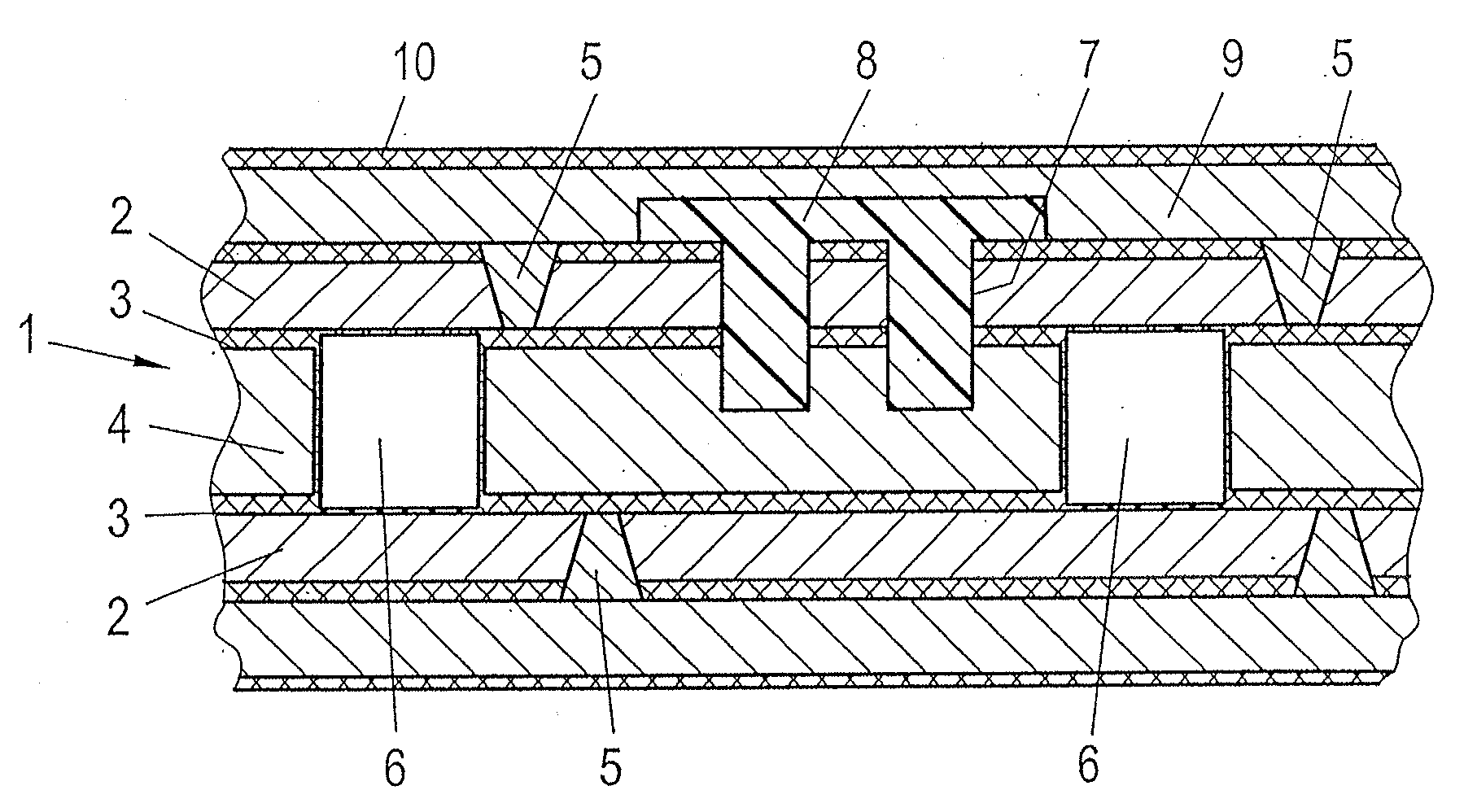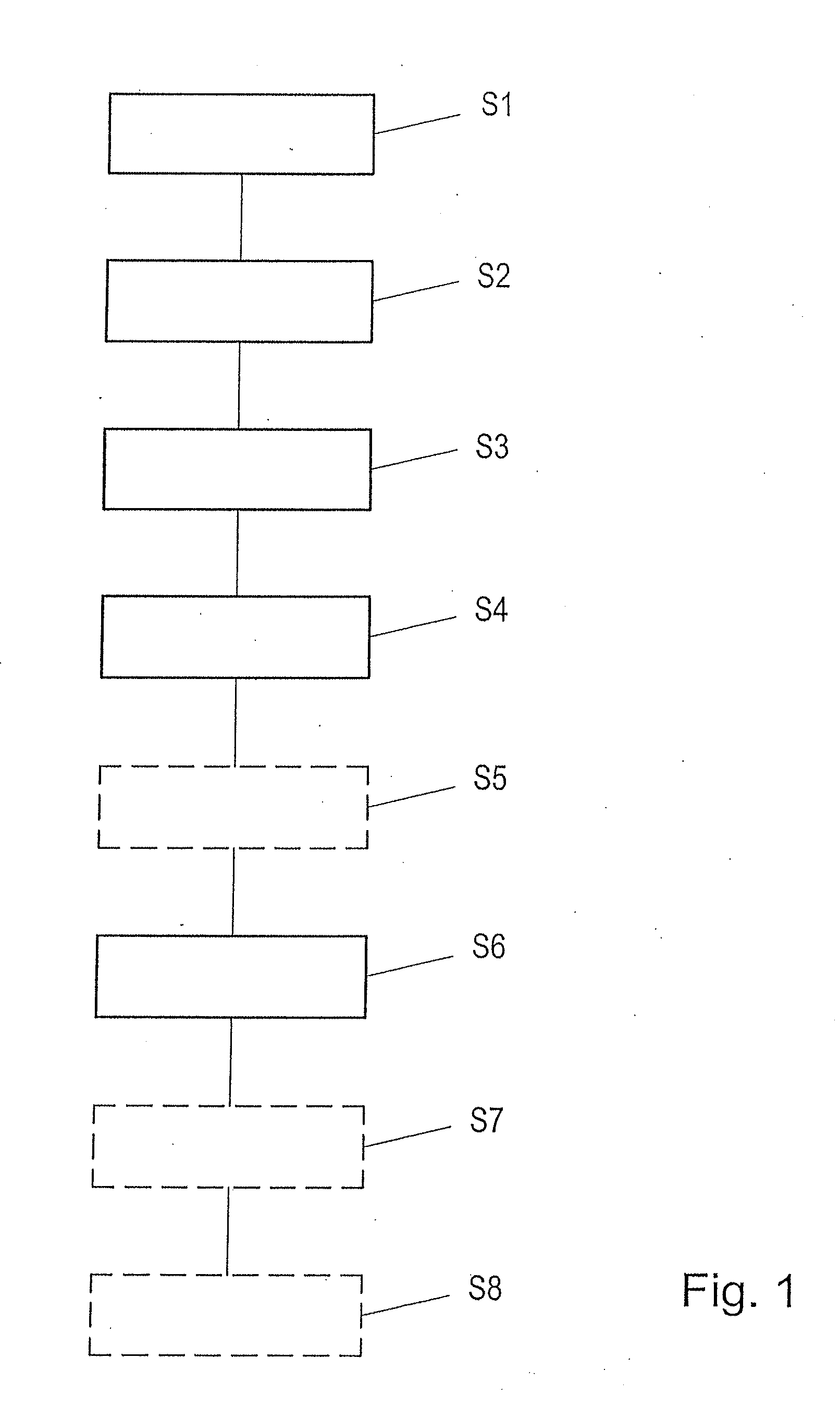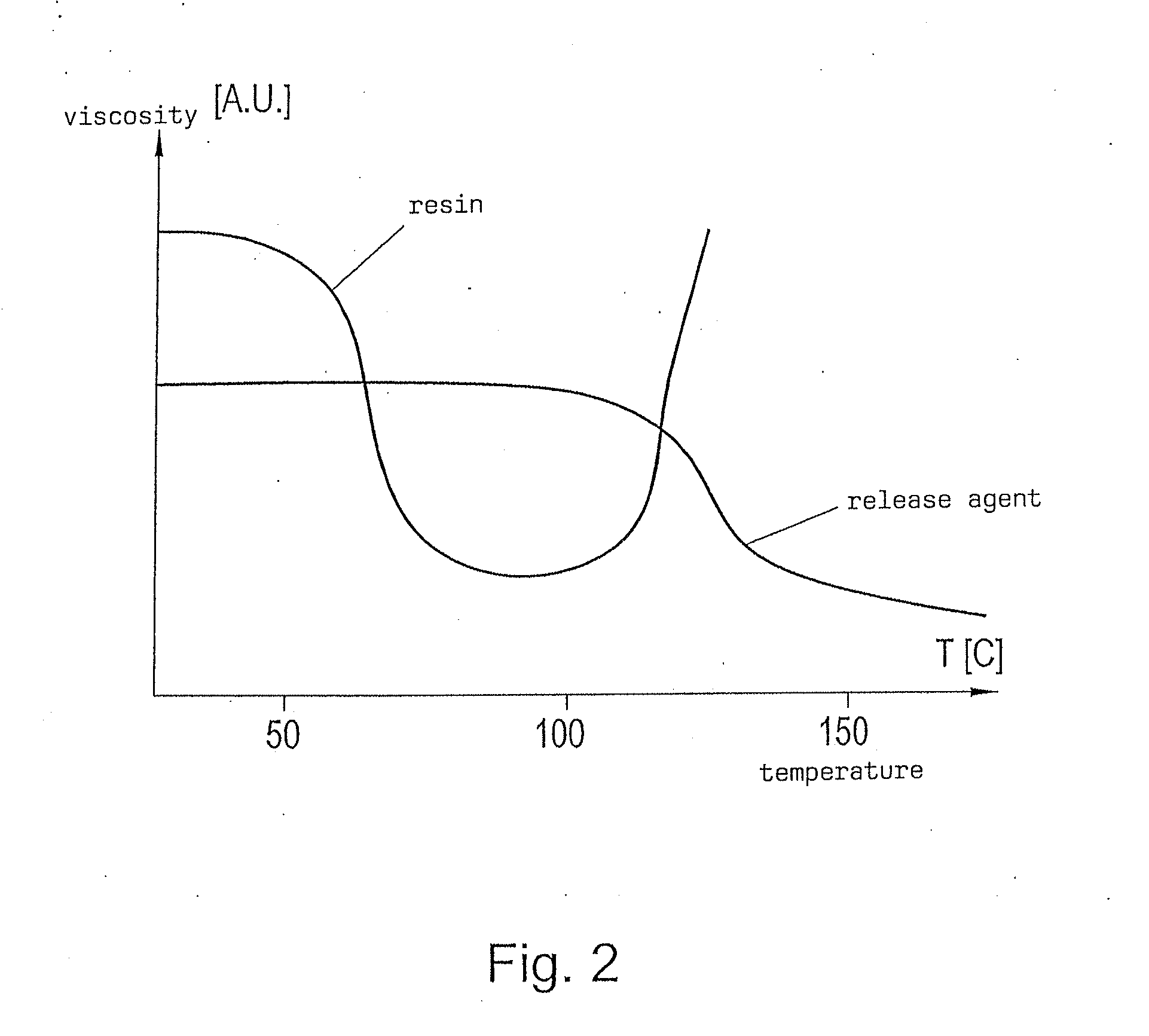Method for producing a multilayer printed circuit board, adhesion prevention material and multilayer printed circuit board and use of such a method
a technology of adhesion prevention material and printed circuit board, which is applied in the direction of printed circuit non-printed electric components, printed circuit aspects, coatings, etc., can solve the problems of high demand, high cost, and inability to remove anti-adhesion materials, etc., and achieve the effect of suppressing disturbing and background nois
- Summary
- Abstract
- Description
- Claims
- Application Information
AI Technical Summary
Benefits of technology
Problems solved by technology
Method used
Image
Examples
example 3
[0081]
Calcium stearate30Dipropylene glycol methyl ether acetate64Ethyl cellulose6
[0082]In order to provide a stripping medium for removing optionally present residues of the adhesion-preventing material, a mixture of a high-boiling solvent and an acid is provided, said acid, in particular, serving to dissolve the metal component of the respectively used metal soap. The particularly organic solvent, in particular, serves to dissolve the binder and the employed fatty acid of the adhesion-preventing material. For the complete and simple removal of the adhesion-preventing material, the stripping medium is directed onto the layer to be removed by spraying nozzles at pressures of >0.5 bar and 20° C. and <120° C. and applied on the surface in the hot state, spraying through the nozzles preferably taking place from below in order to prevent the formation of solvent seas or accumulations on the printed circuit board, and consequently the sedimentation of optionally not completely dissolved s...
PUM
| Property | Measurement | Unit |
|---|---|---|
| boiling point | aaaaa | aaaaa |
| boiling point | aaaaa | aaaaa |
| thickness | aaaaa | aaaaa |
Abstract
Description
Claims
Application Information
 Login to View More
Login to View More - R&D
- Intellectual Property
- Life Sciences
- Materials
- Tech Scout
- Unparalleled Data Quality
- Higher Quality Content
- 60% Fewer Hallucinations
Browse by: Latest US Patents, China's latest patents, Technical Efficacy Thesaurus, Application Domain, Technology Topic, Popular Technical Reports.
© 2025 PatSnap. All rights reserved.Legal|Privacy policy|Modern Slavery Act Transparency Statement|Sitemap|About US| Contact US: help@patsnap.com



